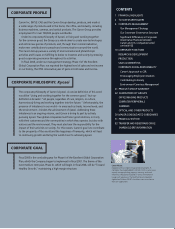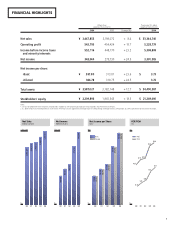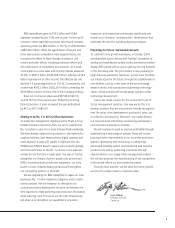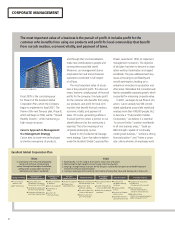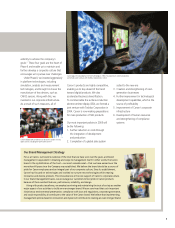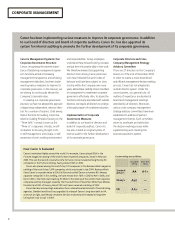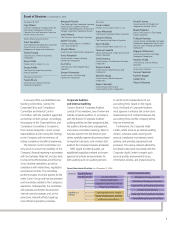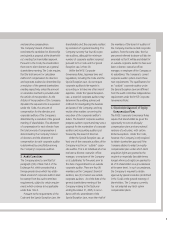Canon 2004 Annual Report Download - page 12
Download and view the complete annual report
Please find page 12 of the 2004 Canon annual report below. You can navigate through the pages in the report by either clicking on the pages listed below, or by using the keyword search tool below to find specific information within the annual report.
10
CORPORATE FUNCTIONS
RESEARCH & DEVELOPMENT
We at Canon view technology as the origin of our profit.
Looking to Canon’s development from 2010 through 2020,
we are working to identify fields for further growth. Fujio Mitarai
Our Approach to R&D
Phase II of our Excellent Global
Corporation Plan, a blueprint of long-term
management objectives to be met in
2005, contains four goals, one of which
is “building up R&D strength to enable
Canon to continually create new business
opportunities.” We at Canon view
technology as the origin of our profit.
In fiscal 2004, research and development
expenses totaled ¥275.3 billion, an
increase of ¥16.2 billion from the previous
fiscal year, corresponding to 7.9% of
consolidated net sales. Because the sales
growth rate exceeded growth in research
and development expenses, the ratio of
such expenses to net sales declined
compared with fiscal 2003. Looking at
figures for individual business segments
in fiscal 2004, investment in business
machines was ¥120.9 billion, or 43.9% of
total research and development expenses,
while investment in cameras was ¥35.5
billion, or 12.9%.
Investment in optical and other products
was ¥29.4 billion, or 10.7%, and basic
R&D that cannot be allocated by business
segment was ¥89.5 billion, or 32.5%.
Our emphasis on research and devel-
opment has yielded significant benefits.
One of these benefits is a wealth of intel-
lectual property, as attested to by the
number of patent registrations held.
Canon typically pursues 140-150 devel-
opment themes at any one time.
In 2004, the Company’s research and
development efforts resulted in the regis-
tration of 1,805 patents in the United
States (according to figures announced
by the U.S. Department of Commerce),
thus ranking Canon third, and the
Company continued its 13-year winning
streak of finishing among the top three
patent registrants.
Canon has designated the following five
fields as its imaging engines:
1. Image-capturing engines, such as
those in cameras
2. Electrophotographic engines, such
as those in copying machines and
laser beam printers
3. Inkjet printing engines, such as those
in inkjet printers
4. Photolithographic engines,
encompassing optical and precision
technologies
5. Display engines, which will mark out
entry into a new field
In the fifth area of display engines, Canon
has developed an SED (surface-conduction
electronic emitter display) and is now
concentrating its efforts on commercial-
izing SED panels. SEDs will make it possi-
ble to meet the growing market demand
for even larger, high image quality display
screens that offer brightness and high
image resolution comparable with
cathode ray tubes but with a thin profile.
Our R&D Structure
Canon carries out research and develop-
ment at worldwide R&D centers, with
bases in each region possessing their
own particular core technologies. Canon
promotes cooperation among its global
network of research and development
centers in all areas, from basic research
to product development. In Japan, the
centers carry out basic R&D in such areas
as nanotechnology and biotechnology
and, moreover, each business unit has
research and development centers that
engage in product development.
Another important feature of Canon’s
research and development is its emphasis
on environmental issues.
In 2004, Canon positioned its Leading-
Edge Technology Development
Headquarters with the aim of creating
core technologies that will give birth
to next-generation, major businesses.
As the next step in this process, we
will complete a new state-of-the-art
technology research center at the Canon
Architect’s drawing of a new state-of-the-art technology
research center
The Robotics Eye, now under development at Canon is a
cutting-edge sensor that can recognize and track human faces.


